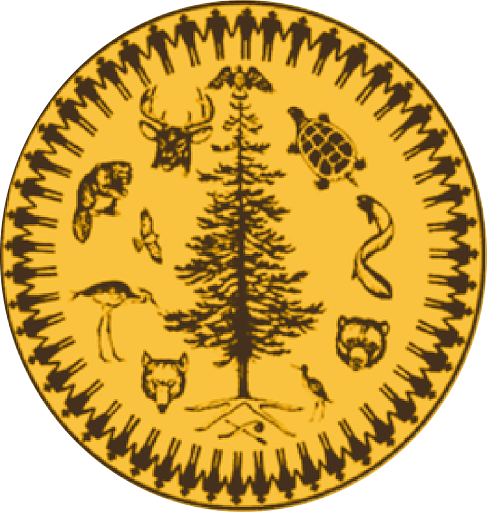Overview
Haudenosaunee Impact on the US Constitution

Authors and Collaborators:
Lynelle Sigona (Amah Mutsun) Education Specialist
Maggie Peters (Yurok/Karuk) NASMC Learning Specialists Humboldt County Office of Education
Grade: 8
Suggested Amount of Time: Four 55 minute sessions
Curriculum Themes
- History
- Law/Government
Learning Goals
Compare and Contrast the Iroquois Confederacy Great Law of Peace and the Constitution of the United States of America.
Understand how Native Governments impacted and influenced the Founding Fathers and the Constitution of the United States.
Lesson Overview
This lesson on the Haudenosaunee Confederacy offers students a powerful opportunity to explore the roots of American democracy through the lens of Indigenous governance. Centered on the Great Law of Peace and the political structure of the Haudenosaunee Confederacy, the lesson emphasizes how Native ideas of unity, consensus, and leadership directly influenced the formation of the U.S. Constitution.
Students will learn about the Confederacy’s matrilineal society, the important role of Clan Mothers, and how women held real political power in a system that valued service, peace, and sustainability. Through engaging activities—such as vocabulary reflection, reading comprehension, constitutional comparison, creative slideshows, and art-based group projects—students connect with Indigenous traditions as living systems of governance and culture, not just historical facts. The lesson promotes culturally responsive teaching by encouraging the use of the term Haudenosaunee over “Iroquois” and discussing the importance of identity and self-naming. It supports critical thinking, historical inquiry, and creative expression, while fostering respect for Native contributions that are often overlooked in U.S. history classrooms.
Teacher Background
Teaching about the Haudenosaunee Confederacy provides an essential opportunity to correct historical omissions and uplift the voices of the First Nations of what is now the United States. Too often, Native American contributions to democracy, culture, and governance are overlooked or taught through a colonial lens. This lesson highlights the sophisticated political system of the Haudenosaunee and its direct influence on the formation of the U.S. Constitution—offering students a fuller, more accurate picture of American history. It also centers Indigenous values such as consensus, sustainability, and matrilineal leadership, which are still deeply relevant today. When teaching about Native peoples, best practices include using the correct names that communities use for themselves (e.g., Haudenosaunee rather than “Iroquois”), avoiding stereotypes, and emphasizing that Native nations are living, sovereign peoples with vibrant cultures and governments. Incorporating Native voices—through videos, primary sources, interviews, and literature—is key to honoring their perspectives and fostering respect. This lesson is designed to help educators approach Native history not as a relic of the past but as a vital and continuing part of our shared national story.

